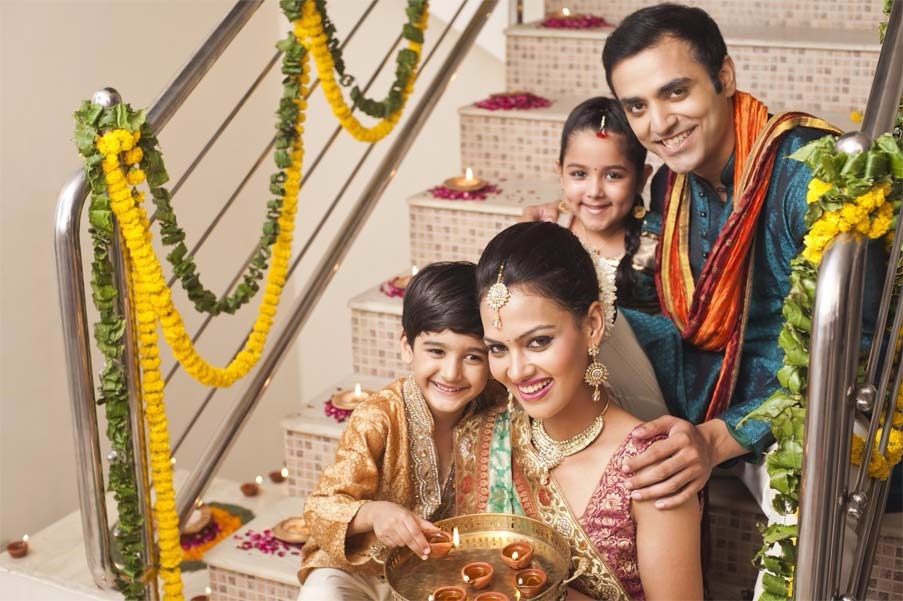
Making Diwali Interesting for Your Kids
24 Oct 2016 | 4 min Read
Anshu Bhojnagarwala (firsttimemommy)
Author | 67 Articles
If you live in a nuclear family, you’ve probably observed your child feeling a little lonely at times, especially during festivals. Unlike joint families where celebrations are a big deal, children in nuclear families may have low-key celebrations at home and at times without the knowledge of underlying traditions behind these festivals.
Some of us are lucky enough to be a part of a friendly neighbourhood where festivals are a community party. But if you’re not, there’s no reason why you cannot make your Diwali special and super fun. It’s just about gearing up and involving your kids with the preparations. Here are some interesting Diwali childrens’ activities.
Make Diwali-specific specialties: For me, Diwali was about making sweets and savouries gunjiyas, moong dal ka halwa, mathiyas and chorafali. My mom would make savouries for us batch after batch and some more for friends and family. Try and whip up some simple delicacies.
Kids love filling gunjiyas, folding them up and making creative designs on them. Ask your child to roll a ladoo or cut a plate of barfi into diamond shapes. They will also love placing silver foil (chandi ki varak) on the plate of goodies.

Sharing happiness with everyone: Not everybody can celebrate Diwali with pomp and show. As you clean your house for Diwali, take out old and used items and donate them. Ask your child to join you in the cleanliness drive. They can help you declutter by stacking up used clothes, toys and books and donate to less privileged kids from the slums, orphanages or the maids’ children.
You don’t need to restrict yourself to old and used stuff. Gift stationery, sweets or other new useful things too. It’s just natural for kids to be happy when other kids are happy 🙂

Drawing a rangoli: While you make an elaborate traditional rangoli design with rice powder, ask your children to make a drawing of their choice next to yours. Urge them to then fill it up with colours or flower petals and watch pride light up their face.

Help with Puja preparations: There are loads of things to be done on Diwali day that children can help you with. Allow them to help you with polishing the silver, washing and drying the earthen diyas, rolling cotton wicks, decorating the altar with flowers, making flower torans or arranging fruits and bhog before the Ganesh and Lakshmi idols. Children feel responsible and important as they finish one chore after the other.

Burst firecrackers at a public place: While I do not endorse bursting firecrackers, it’s not always easy to make kids understand that, when everyone else around them is doing that. If your kids insist on lighting firecrackers, do so at a public place like a beach, riverfront or a signal square.
Admire decorations: Some people love to elaborately deck up their houses during Diwali . These houses are a lovely sight at night. After Lakshmi Puja, we go on a little drive in the neighbourhood to feast our eyes on these beautifully decorated houses. You can try this too. However, beware – once your kids see them, they would want them too.

Visit long-forgotten relatives: We meet our friends fairly often through the year. How about visiting relatives this Diwali with your kids? Kids will enjoy interacting with their cousins and elders, and get a sense of belonging with their extended family as well.
If you have children below a year, keep your sweetheart from the high-decibel sounds of crackers.
Wish you and your family a very happy and prosperous Diwali!
Explore the entire collection of articles: Diwali If you are reading this article on our website and have an Android phone, please download our APP here for a more personalised experience based on your lifestage.
A


Suggestions offered by doctors on BabyChakra are of advisory nature i.e., for educational and informational purposes only. Content posted on, created for, or compiled by BabyChakra is not intended or designed to replace your doctor's independent judgment about any symptom, condition, or the appropriateness or risks of a procedure or treatment for a given person.
